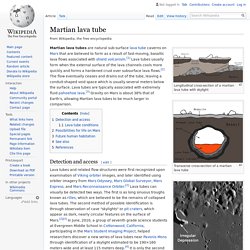

The 'Space Architects' of Mars. NASA - Mars Homes Competition Winners. SHEE, Self-Deployable Habitat for Extreme Environments. Mars Habitat. North Las Vegas company builds space habitat. Future Home on Mars? The Case for Mars 21. Mars Incubator Habitat. Building on Mars: The Construction Industry Space Race. What we can learn from building on mars. Researchers use solar power to make carbon fiber out of thin air I… Researchers use solar power to make carbon fiber out of thin airI read yesterday this article, which made me wonder if will reverse climate change.

Interesting ideas bouncing in my cranial vault ;) Carbon capture is an idea that’s been around for a while, but it’s always seemed like a bit of an afterthought, a way to slightly slow the pace at which we’re pumping carbon dioxide into the atmosphere. But what if we could do at a scale that would suck all the carbon we’ve emitted since the industrial revolution right out out of the atmosphere, and turn it into something incredibly useful? This is the claim being made by Stuart Licht, a professor of chemistry at George Washington University, who earlier this month published a paper in Nano Letters demonstrating a method of turning atmospheric carbon dioxide into solid carbon using concentrated solar power, with only oxygen as the byproduct.
This is what the first houses on Mars will probably look like. As shown in the movie "The Martian" starring Matt Damon, living on Mars presents a number of challenges.

The red planet hosts an unbreathable atmosphere, extreme temperatures, high levels of radiation and dust storms, so future settlements there will need to be built with adaptability and resiliency in mind. That's the idea behind a leading NASA design for homes that the first Mars pioneers could be living in, so-called "ice homes. " The shelters look reminiscent of igloos, and that idea isn't far off. The fully inflatable, inner-tube-like domes are to be covered in a shell of water ice, which offers insulation and protection from the elements. “After a day dedicated to identifying needs, goals and constraints we rapidly assessed many crazy, out-of-the-box ideas and finally converged on the current Ice Home design, which provides a sound engineering solution,” said Kevin Vipavetz, Langley Research Center senior systems engineer.
Related on MNN: Mission Mars Hi-Seas Simulation in Pacific Domes Dome. Pacific Domes of Oregon is beyond thrilled to build a Geodesic Dome Home for NASA, and their Mission to Mars!

We are fortunate to work with both large corporations, and first-time home buyers purchasing his or her first Shelter Dome. Whether it is an Affordable Tiny Home, or a giant project of global importance, we are thrilled to work on some of the most important Geodesic Dome projects for your family, and the entire world, like the NASA Hi-Seas Mission to Mars project, vital to the exploration of space! Building Dome Homes is our forte, we are the industry leader, building Dome Houses for over 36 years. HI-SEAS is a Mars simulation project. Funded by NASA as a human performance study, the goal is to learn as much as possible about isolated living.
Crew members are encouraged to log their experiences living in their dome home. How to Survive on Mars. Nat Geo 'Mars' Series Explores Making a Home on the Red Planet. The third episode of the National Geographic series "Mars" airs tonight and will explore the challenge of building a long-term home on Mars.

The six-part series is a combination of science fiction and science fact, consisting primarily of a scripted drama about the first human mission to Mars, set in 2033. But the drama is interspersed with documentary segments that explore real science taking place in 2016 that is contributing to a future human mission to the Red Planet. In the third episode, the astronauts are looking for a place to deploy a domed habitat that will serve as their long-term home on Mars.
But not just any spot will do: They need to find a location that is protected from harsh space radiation, and one that has nearby ice deposits that the explorers can turn into water. ['Mars': The Epic National Geographic Channel Miniseries in Pictures] On Earth, the planet's atmosphere and magnetic field protect humans and other life-forms from space radiation. Megastructures - New South Pole Station Documentary National Geographic. Imagineering on Mars - Making Heat on Mars(Imagineering E-Zine) It is cold on Mars.

The temperature of the rocks below ground will be close to the average above ground temperature of -80F. If Martians are to live below ground, they will need to heat their homes. Lots of insulation will be needed. Heating systems that use solar energy would make the most sense. Imagineering on Mars - Making Shelters on Mars(Imagineering E-Zine) How to Grow a Mars Base; Mars Society Convention 2016. Mars Maker Space – Print what you need to live on a new world ! Long Term Mars Habitat / Human missions / New Mars Forums. I still have a lot of work to do on this idea, have to try and figure out how many launches it would take to get all of these components to Mars, but I thought I would post what I have so far.

Long Term Buried Mars Habitat A buried two story, 20' x 20', square habitat with 7' high ceilings buried beneath (needs to be 2.5 meters) of Martian regolith. The upper level of the buried habitat is the sleeping level with four sleeping rooms, a common area, a microwave, a water tank, and a central bathroom/toilet. The bottom level of the buried habitat is the greenhouse where fruit trees are grown in large plastic tubs and vegetables are grown in long rectangular tubs. Martian lava tube - Wikipedia. Longitudinal cross-section of a martian lava tube with skylight Transverse cross-section of a martian lava tube Sinuous chain of collapse pits transitioning into a continuous uncollapsed segment of a lunar lava tube.

The chain is about 50 km long. Mars habitat - Wikipedia. Saturn V rocket used for the human lunar missions A Mars habitat is a place that humans can live in on Mars.[2] Mars habitats must contend with surface conditions that include almost no oxygen in the air, extreme cold, low pressure, and high radiation.[3] Alternatively, the habitat may be placed underground which helps solve some problems but creates new difficulties.[4] Overview[edit] One of the challenges for Mars habitats is maintaining the climate, especially the right temperature in the right places.[5] Things like electronics and lights generate heat that rises in the air, even as there are extreme temperature fluctuation outside.[5][6] Technologies[edit] Breathing gas[edit] While it is possible for humans to breathe pure oxygen, a pure oxygen atmosphere was implicated in the Apollo 1 fire.

History[edit] How to Grow a Mars Base; Mars Society Convention 2016. Doug Plata - Inflatables - 19th Annual International Mars Society Convention. Operational Constraints. Cross-linked constraints. The Mars Surface Hab (MSH, or “the hab”) The Mars Surface Habitat, or, more simply, “the hab”, is a custom-built piece of hardware designed to accommodate, ideally, a crew of 6 astronauts on the surface of Mars.

It must therefore include cabins, common areas (kitchen/dining), laboratories and other work areas, ECLSS (Environment Control and Life Support Systems), waste-disposal, heating, lighting, cooking and electrical systems. The current intention is for the hab to also include ISRU (In Situ Resource Utilisation) equipment capable of extracting water, oxygen and nitrogen from the Martian atmosphere. These will be used to maintain water and air supplies for the crew, compensating for losses due to leakage, inefficiencies in recycling systems, airlock usage, and possibly other factors. It will therefore also include appropriate tanks to store sufficient quantities of these fluids. The hab may include inflatable modules. Two weeks on ‘Mars’ in a tuna can.
Written for the E&T Magazine With photographer and producer of the Czech language service of the Australian SBS radio Filip Koubek planting the SBS flag (Credit: Filip Koubek) “Sure, I would go to Mars if I had that chance, but not with a one-way ticket,” says 32-year old photographer, health and safety officer and back-up crew engineer Filip when I ask him after two weeks at a simulated Martian station in a desert in the middle of the American state of Utah.

“I mean, the Earth is simply such a great place to live,” he adds. Our crew of five (originally six), number 135, is about to head back to “Earth”, contemplating what we have learned from this experience.
Crew Capsule. Rover. Base. Incremental Design. 5 year. 10 year. 20 year. Mars Direct. Earth-based Simulations. Visions.